How to improve your climbing
We’ve all seen the pictures of professional cyclists sailing gracefully up Alp D’Huez like they’re on a gentle Sunday ride. Unfortunately, for the rest of us it’s far from effortless. It is hard, painful and anything but graceful. So why is it so hard? More importantly, how can you improve your climbing so you’re cresting the top with the leaders.
You’d be forgiven for thinking it’s all just about producing lots of power with minimal weight. That is certainly a major factor so let’s explore that first:
Power
Of course more power is always better, but before we can improve it we need to know what duration we are likely to be climbing for. If your goal is a Gran Fondo, it will involve climbing for prolonged periods on relatively shallow slopes. For instance, the 2022 L’Etape du Tour de France climbs the Col du Galibier, Col de la Croix de Fer and Alp D’Huez. The Galibier (from Briançon) is 36km long, averages 4% gradient and peaks at almost 12%. That is going to take almost 2 hours even if you’re a World-Tour Pro. Therefore, the intensity for this climb and the ones to follow is sure to be in the Tempo zone (above Endurance and below Anaerobic Threshold). This is where you should be accumulating training time. Start off with intervals of 15-20 minutes and build up to durations of 1-2 hours.
If on the other hand, if you want to prepare for a cobbled classic like the Tour of Flanders then you’ll need to work on short-term efforts of a few minutes. Intervals of 30 – 120 seconds will improve your Anaerobic Power. Try 5 x 60 seconds, with 5 minute recoveries.
Weight Loss
In terms of weight loss I don’t believe in following faddy ‘diets’ or fasted training. Instead you need to work on changing habits slowly, but sustainably and you need to fuel your workouts. Take a typical week and write down everything you eat and drink. Most people already know what their dietary excesses are, it just needs a concerted effort to reduce them over time. Start by replacing one bad habit for a good one: swap the morning chocolate biscuit for a banana or some mixed nuts. Swap one beer on a Friday night for a non-alcoholic beer; they’re much better tasting than they used to be!
Over a period of weeks your body’s gut will adjust to the changes and you won’t crave the sugary snacks as much as you once did.
The Bike
All the aero gains in the world won’t help you climb at low speed. On the slopes, weight is still King. Your frame and wheels are the two biggest contributors to a bike’s weight. Most new bikes are supplied with relatively modest wheels to keep the price down. A new set of lighter wheels often transforms the climbing ability of any bike.
Cheap tyres can also be surprisingly heavy and contribute to the Rotating Mass of the wheel which increases inertia still further making climbing harder.
Cadence and Gearing
When riding on a slope the speed at which you pedal (cadence) falls due to the increased inertia. A typical cadence might be 80-90rpm on the flats but on an incline it drops to 60-70rpm. This is not a problem but you need to ensure that your gearing allows you to pedal at your comfortable cadence. If you are dropping below 60rpm at your required climbing effort then you should consider investing in a lower first gear.
You could benefit from incorporating some low cadence work into your training. You don’t need huge quantities as you’ll be recruiting more fast-twitch muscle fibres which fatigue quickly. Try 4 sets of 5 minutes at 60-70rpm with 5 minute recoveries.
Technique
Most people find climbing easiest when seated, with their hands on the top of the bars. This provides a stable platform to push against and facilitates the deep breathing required for climbing. Your weight should be back of the saddle and your arms relaxed.
Climbing out of the saddle (with hands on the hoods) should be reserved for the steeper slopes or when you just want a brief change of position. With all but a few exceptions (think Alberto Contador), most people find riding out of the saddle more fatiguing because you are recruiting more (upper body) muscles. Nonetheless it is very effective on steep slopes as it allows you to leverage your bodyweight over the pedals. Don’t over-work your arms though like you would in a sprint.
Ride on the tops of your handlebars and pretend you are playing the piano. This will relax the chest and arms and make sure you aren’t pulling too hard on the bars
Eddy Merckx
Because climbing forces you to adopt a different riding position, this subtly alters the body’s muscular recruitment patterns. For this reason you should always try and conduct your climbing sessions on a slope. If training indoors, elevate the front wheel to an angle which matches the gradients you are likely to encounter on your event.
Working on your core strength off the bike will also help. Whether you are climbing in or out of the saddle, a strong core provides a better platform to push against. You will fatigue less quickly and produce more sustainable power. Just including a few simple planks and side planks a couple of times a week will make a noticeable difference.
Improving your Climbing
So there you go, follow these tips and you’re sure to improve your climbing. Practice low cadence efforts, preferably on hills, work on your core strength and climbing technique. Twice a week should be sufficient to work on your climbing ability. You’ll soon be dropping everyone on the slopes.
Want further help training for your event? Enjoy all the benefits of a one-to-one coaching experience and be the Best You Can Be. See the Coaching Page for details [places strictly limited].
